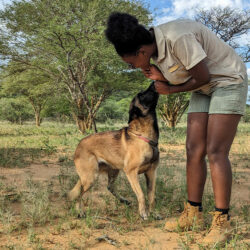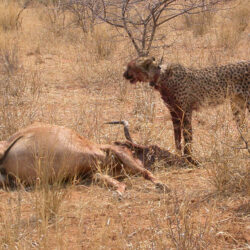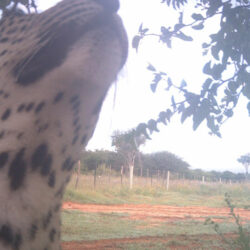Searching for African wild dog scat in Namibia’s Eastern communal farmlands
-

- by Emma Reasoner December 19, 2022
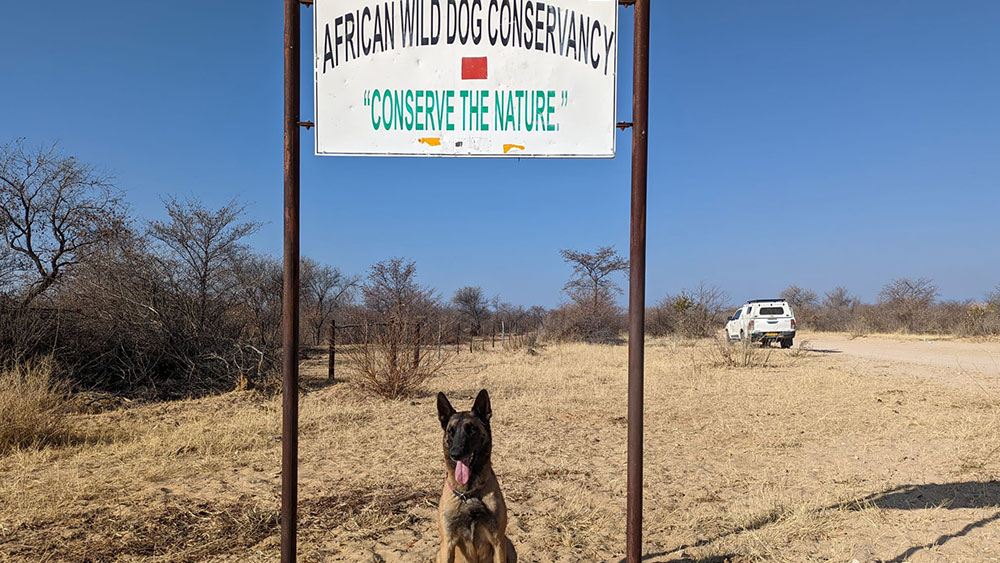
This September, I got a chance to do more fieldwork in the Okakarara District Communal Conservancies (ODCA), an area I’m very passionate about. For the first time, I partnered with Tim, CCF’s scat detection dog handler, and Enya, a trained detection dog.
This was extra special because I’m an MSc student at CCF researching human-wildlife conflict in the ODCA. This area faces many challenges, including a low prey density and high incidence of livestock depredation by predators. It is also home to an understudied population of African wild dog (Lycaon pictus), which are highly persecuted by the farming community. My research involves collecting African wild dog scat to analyze how much of their diet consists of livestock vs. wild prey.
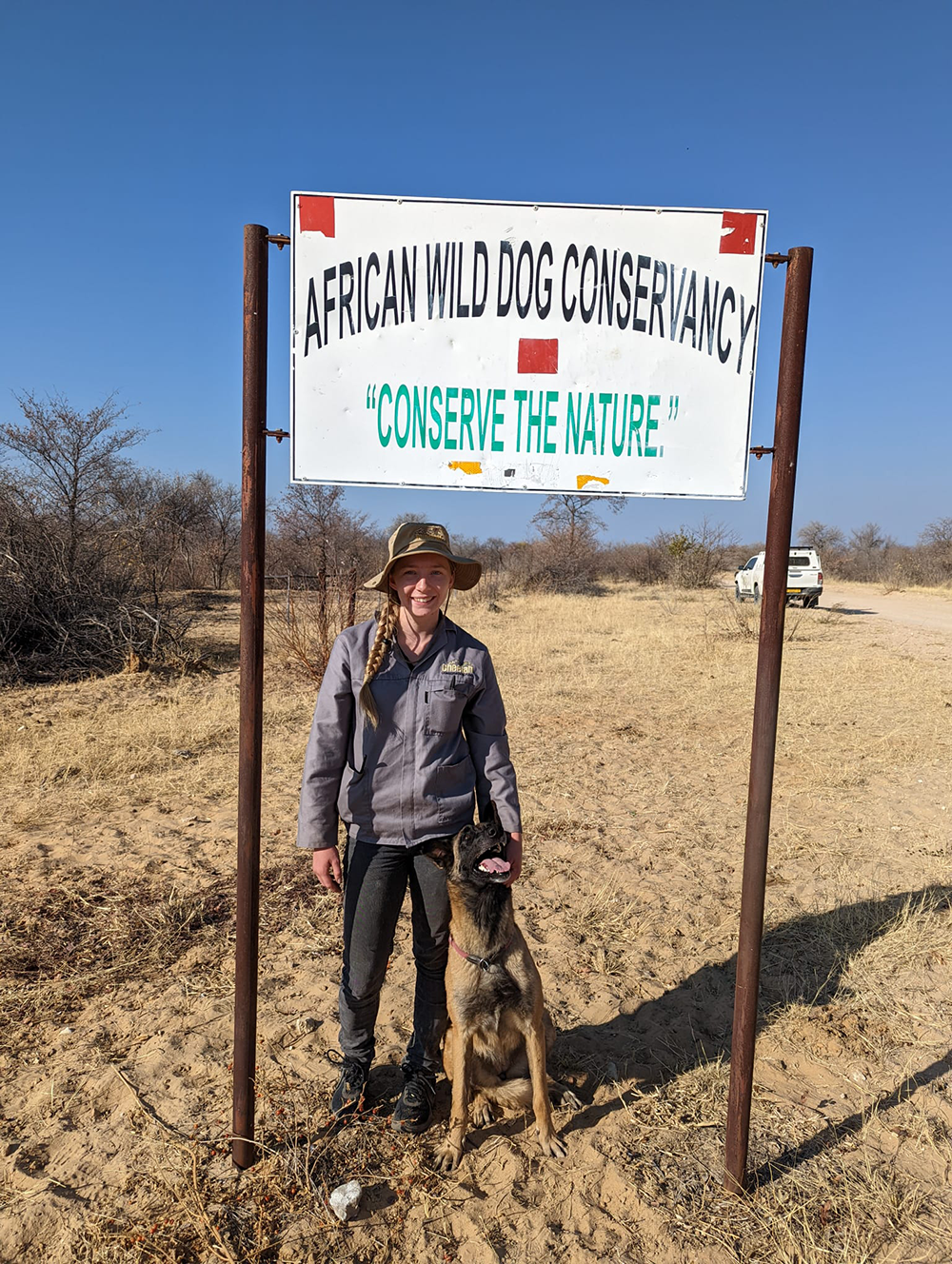
Correctly identifying African wild dog scat in the field is difficult, and that’s where Enya comes in. She is trained to detect and indicate both cheetah and African wild dog scat. I was excited for the chance to work with CCF’s scat detection team and to hopefully add more African wild dog scat to my research.
It was wonderful to be back in the ODCA where I have done fieldwork with CCF since 2019. With summer approaching, it is critical that Enya doesn’t work in the heat of the day, so we left camp every day before sunrise and returned after dark. I learned so much from watching Tim and Enya work together. Enya loves her job and gets excited every time she sees Tim holding her GPS collar that she wears while working. She also looks forward to getting treats after every search! Even on the days when we didn’t find any cheetah or African wild dog scat, it was amazing to see how she remains motivated to search.

Relying on local knowledge of African wild dog presence to increase our chances of finding scat, we targeted our searches around reports of recent activity. Like many predators, African wild dogs frequently travel using roads and will also be present around known waterpoints. During our 6-day trip, Enya covered a search distance of 60km. Not only did we walk transects on roads and around waterpoints, we also did an area search where several livestock were reportedly killed by a small pack of African wild dogs two weeks prior.
It was near one of those locations that Enya indicated two African wild dog scats! It was so incredible to see her approach the scat, sniff it, and turn to sit down facing Tim, indicating that it is an African wild dog scat!
Now back at the CCF center, I am working in the genetics laboratory, eager to extract DNA from the samples we collected on this trip. We will be able to confirm genetically if the samples are from African wild dogs, and even determine which individual they are from, and if it is an individual we have collected samples from before. We are hopeful that with Enya’s help, we have new African wild dog scats to analyze. This will make a significant contribution in my research and give us insight on the diet of this unique African wild dog population in Namibia.
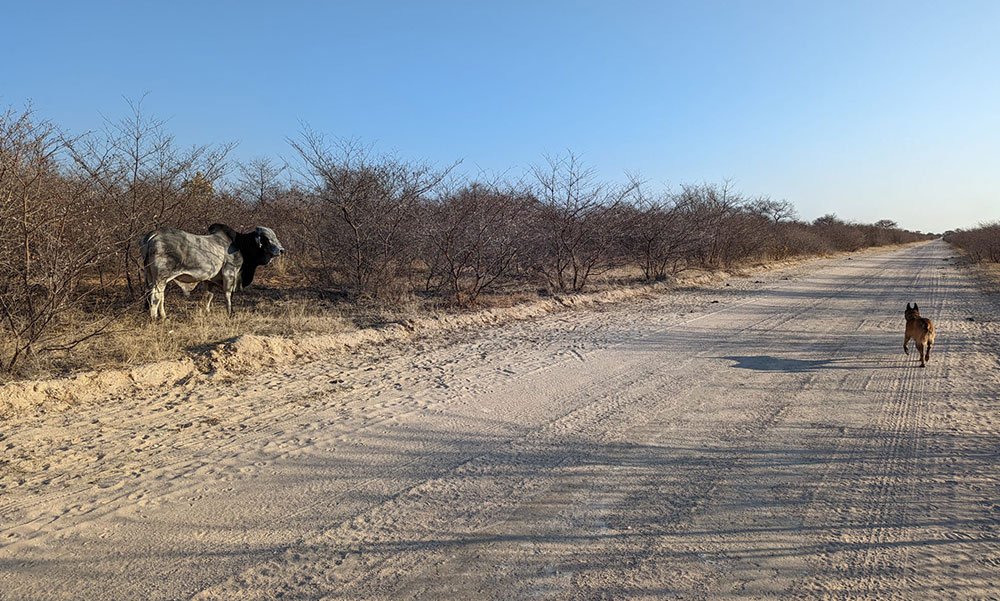
Related Reading
-
July 8, 2024
N#A-JAQNA Conservancy Trip

